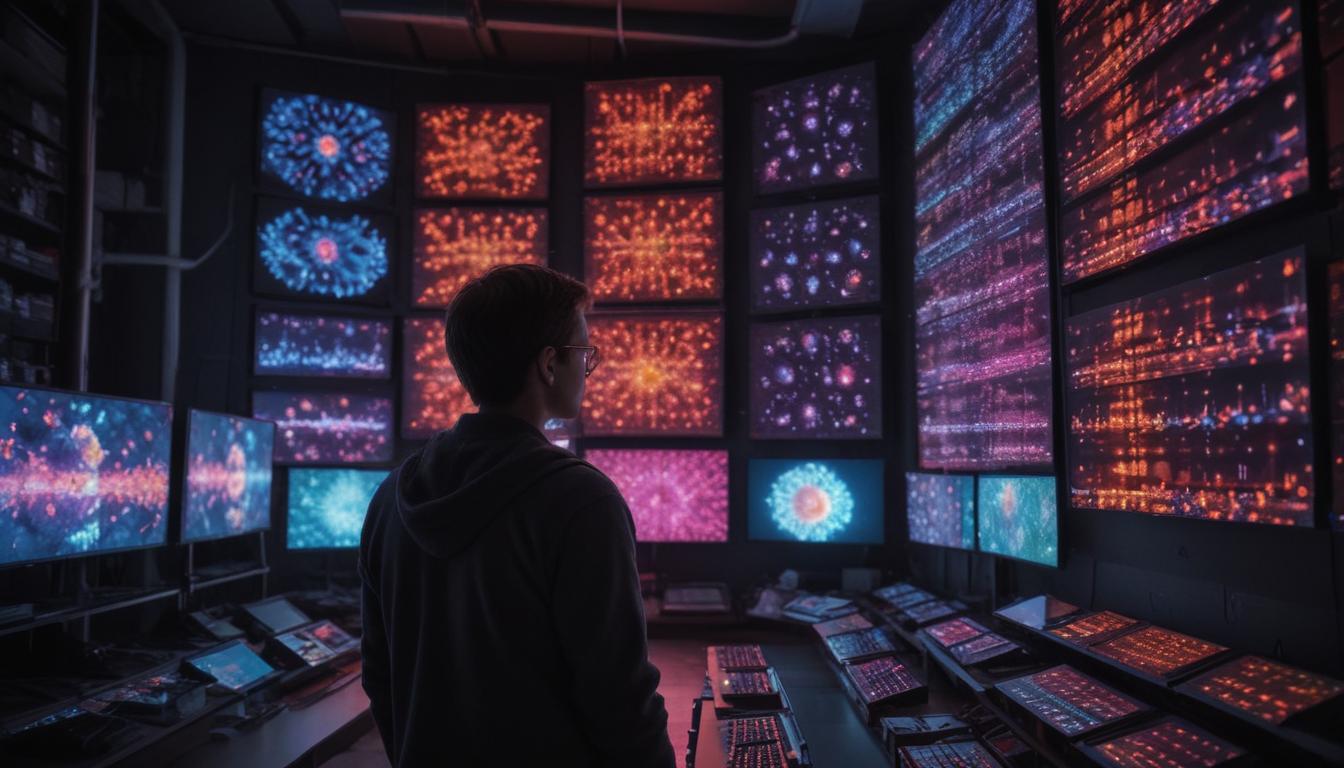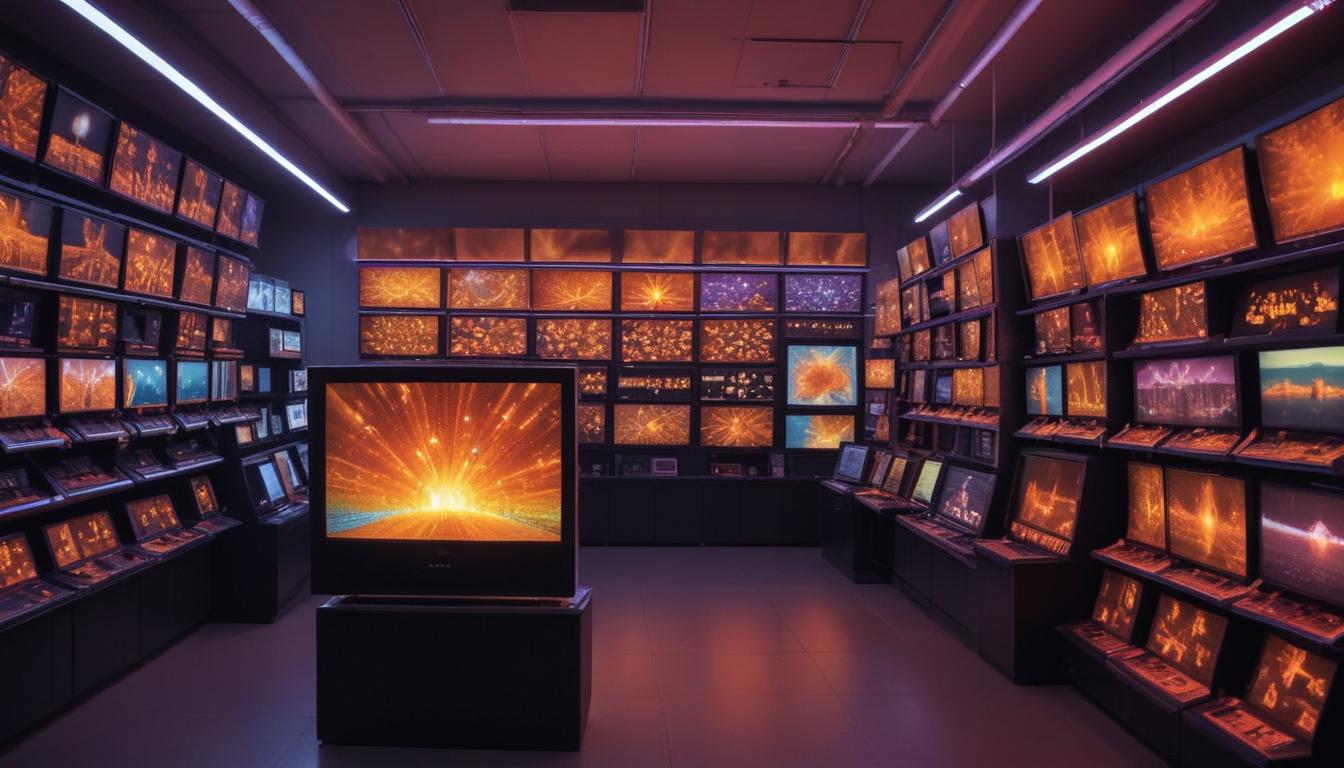Now Reading: The Big Deal About Tiny Quantum Dots
- 01
The Big Deal About Tiny Quantum Dots
The Big Deal About Tiny Quantum Dots

Quantum Dots Tiny Technology with Big Potential
Have you ever stood in an electronics store, staring at a wall of brilliant televisions, and wondered what “QLED” actually means? You hear words like “quantum” and might imagine complex physics far beyond everyday understanding. It can feel like technology is advancing so fast that it’s impossible to keep up, leaving you confused about what makes one product better than another. You want to understand the incredible innovations shaping your world, but you need a clear, straightforward explanation.
This is where the magic of quantum dots comes in. Forget the intimidating jargon. This tiny technology is not only responsible for the stunningly vibrant colors on your screen but is also poised to revolutionize fields from medicine to renewable energy. We are going to break down exactly what quantum dots are, how their minuscule size unlocks incredible power, and how they are already making a tangible impact on our lives, with an even brighter future ahead.
Unveiling Quantum Dots A Simple Explanation
At its core, a quantum dot is a minuscule man-made crystal, a semiconductor so small that it’s measured in nanometers. To put that into perspective, a single quantum dot is thousands of times smaller than the width of a human hair and can be made up of just a few thousand atoms. Think of them as artificial atoms whose properties we can precisely design and control in a lab. This ability to engineer them from the ground up is what makes them so uniquely powerful.
The most fascinating property of a quantum dot is its relationship with light, and it all comes down to size. The exact color of light a quantum dot emits when energized depends entirely on how big it is. Smaller dots glow blue, while progressively larger dots glow green, yellow, orange, and red. This phenomenon is a direct result of an effect called quantum confinement, which dictates that the smaller the particle, the more energy is required to excite it, resulting in higher-energy (bluer) light. By simply changing the size of the crystal, scientists can tune it to produce any specific color in the visible spectrum with astonishing purity.
The Science of Size How Quantum Dots Create Color
So how does this size-to-color trick actually work in a device like a television? It’s a process of remarkable efficiency. Instead of using traditional color filters that block unwanted light and waste energy, devices with quantum dots use them as a light conversion source. In a QLED TV, for example, a layer of highly efficient blue LEDs provides the initial light. This blue light then shines onto a film coated with trillions of red and green-emitting quantum dots.
When the blue light hits these tiny crystals, they absorb the energy and instantly re-emit it as exceptionally pure red and green light. This newly created red and green light then combines with the original blue light that passes through the film to create the full range of colors you see on the screen. Because the dots produce such narrow and precise wavelengths of light, the resulting colors are incredibly vivid, bright, and lifelike, far surpassing the often “muddy” or washed-out colors produced by older technologies. This process is not only about better quality but also superior energy efficiency, as very little light is wasted.

Quantum Dots in Your Daily Life
The most prominent and successful application of quantum dots so far is, without a doubt, in display technology. The “Q” in QLED TVs and some high-end computer monitors stands for quantum dot. Their ability to produce a wider and more accurate color gamut is what gives these screens their signature “wow” factor, making movies, games, and photos look more realistic than ever before. This technology has moved from a laboratory curiosity to a mainstream feature in consumer electronics in just a few short years.
Beyond brilliant displays, quantum dots are making quiet but significant inroads into other fields. In the world of renewable energy, they are being integrated into solar panels. Their high efficiency at absorbing light and converting it into energy means they can help solar cells capture more of the sun’s spectrum, boosting their overall power output. They are also being used in specialized LED lighting to create bulbs that can better mimic natural sunlight, which can improve focus and well-being. From your living room to the future of green energy, these tiny dots are already hard at work.
The Next Frontier for Quantum Technology
As impressive as current applications are, the future of quantum dots is even more exciting. The medical field is on the verge of a major breakthrough thanks to this technology. Because quantum dots are so small and their light is so bright, they can be used as biological probes. Scientists can attach them to specific molecules that, when injected into a patient, seek out and bind to certain cells, such as cancer cells. When illuminated with a specific light, these dots glow brightly, allowing a surgeon to see the exact margins of a tumor with unprecedented clarity, ensuring all of it is removed while sparing healthy tissue.
The potential doesn’t stop there. In computing, the unique electronic properties of quantum dots make them a candidate for building “qubits,” the fundamental building blocks of quantum computers that promise to solve problems currently impossible for even the most powerful supercomputers. They can also be used to create invisible inks for anti-counterfeiting measures on currency or high-value goods, or to develop hyper-sensitive biological and chemical sensors. What began as a way to make better TV screens is rapidly becoming a foundational platform for the next generation of technology.




































